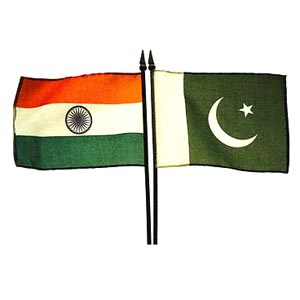problems strew prosperous future

A wave of ecstasy ran through the echelons of the Iranian Government when in 1990 gas fields were discovered. Without wasting any time, the government began hunting lucrative markets for selling gas. It zeroed in on developing countries like India and China whose energy needs for economic prosperity is immense. Iran signed agreements with India and included with the provision that India should import 7.5 million tones per annum of liquefied natural gas (LNG) starting from 2009 over a period of 25 years. In turn, Iran whould give Indian firms developmental rights in two oil-producing fields — Yadavaran and Jufeyr. Secondly, the Iran-Pakistan-India gas pipeline ( it passes through Pakistan ), which is also known as the “ Peace pipeline,” is a proposed 2,775 km project. It is expected to take three to five years to complete and would cost US $7.4 billion. Although Iran and India are keen to have various, mutually-beneficial relations including energy relations, the project has some economic and technical problems that have spilled over on certain political and security issues. Pakistan factor According to the plan of the proposed project, the pipeline would start from Asalouyeh stretching over 1100 km Iran in itself. In Pakistan, it would pass through Baluchistan and Sind. (Around 1000 km of Pakistani territory to India and 600 km of India). Considering the three wars fought between India and Pakistan, it is clear that New Delhi has misgivings regarding the Pakistani attitude towards the project. Therefore, when Iran mooted the project to India, the Indian reaction was not so solicitous. India believes if it accepts this project, its security would be forced to depend on the Pakistan Government and opposing groups within Islamabad. However, Pakistan can play an important role by taking advantage of the pipeline going through its territory and making around $ 220 million annually in transit and other fees. To solve this problem, Iran suggested that if India agrees to pay higher transit fee to Pakistan, Islamabad would refrain from playing politics on the pipeline and also underwrite its security. New Delhi was conveyed that if the pipeline fructified, Pakistan President General Pervez Musharraf would ensure that various groups opposed to the pipeline were effectively discouraged. That is how Iran called the project “ Peace pipeline.” US factor When news broke out about the Iran-India agreement on the gas pipeline, American blood-pressure zoomed up and the US Secretary of State Condoleezza Rice declared her country’s opposition to it because it would ostensibly strengthen Iran’s power and thus negatively affect the United States economically. “Our views concerning Iran are very well known by this time and we have communicated our concerns about gas pipeline cooperation,” she said in 2005. It was after this that the Americans approached New Delhi for the ‘ nuclear concession.‘ According to the India-US agreement, the US would provide assistance to India in nuclear technology and fuel. The agreement, which marked a significant break from decades of US nuclear policy, highlighted the increasingly close relationship between the world’s two largest democracies and enabled both leaders to declare Bush’s visit a success. But it also drew protests from some politicians in both countries. Question Now the question remains whether India will choose Iranian energy or US nuclear associate. Some analysts believe Iran’s energy relation with India is based on supply and demand. It means India needs oil and gas and Iran is an oil and gas exporting country. But they believe it is not strategic relation because India in comparison with other countries ( like China, technology-wise ) does not have a prominent position to export or participate in Iran’s oil sector. At the same time, India had been able to manage it’s oil demands with the help of other oil and gas producing countries. For example, one idea is to connect Bangladesh’s natural gas reserves with the Indian gas grid. Burma could be a source of natural gas, too. Two Indian companies - Oil and Natural Gas Corporation (ONGC) and Gas Authority of India, Ltd (GAIL) - own equity in Burmese natural gas reserves and Burmese officials have indicated an interest in running a pipeline to West Bengal in India. Qatar - with the world’s third-largest natural-gas reserves (14.4 trillion cubic meters) - is another competitor for the Indian market. India’s Petronet and Qatar’s Ras Laffan LNG Company (Rasgas) signed an agreement for the provision of 10.3 billion cubic meters per year of LNG, and deliveries began in January 2004, according to the Energy Information Administration. Former Indian Petroleum Minister Mani Shankar Aiyar visited Moscow and Kazakhstan in late February to discuss energy issues. He said that India is willing to pay $2 billion for a 15 per cent stake in Yuganskneftegaz, " according to the Financial Express. Also said India could invest $25 billion in the entire Russian energy sector. India’s cabinet recently authorised discussion of the Turkmenistan-Afghanistan-Pakistan Natural-Gas Pipeline Project Iran does not, therefore, have a stranglehold on the Indian market. In addition, the India–Pakistan relationship is one of obstacles in Iran-Pakistan–India gas pipeline. Therefore, although both countries are keen to have energy relations, India does not want to take unnecessary risk, as far as Indo-Us relations are concerned. In fact, New Delhi’s relation with US politically is much more important than the one with Iran and recently India has become a new partner for the US. Both India and Iran are keen to pursue the IPI project and Iran is ready to reduce gas price due to its limited political sanction but care has to be exercised about Washington’s opposition which and may scuttle the project. Therefore, despite the potential prosperity in the project, many hurdles will have to be crossed before the IPI comes to fruition.

